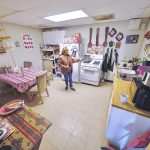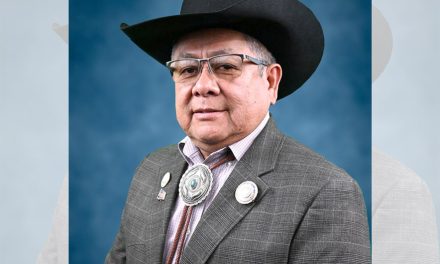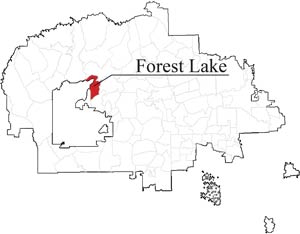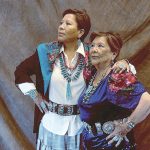
Will chapters get fair share of CARES Act relief?
WINDOW ROCK
With all of the talk over how the $600 million of CARES Act funds will be spent, some chapter officials are starting to wonder if they will be left out. Furthermore, they are concerned that while being asked by Window Rock to prepare for a possible reopening, they may end up on their own when it comes to managing the health and safety of their communities.
“Us chapters at the hogan level are basically looking out for our survival and our well-being,” said Bodaway-Gap Chapter President Raymond Don Yellowman. “We need to make sure we cover all of our bases because ultimately safety is the number one goal here.”
The CARES Act funds are meant to cover costs that are incurred due to the public health emergency, but as of yet there is no real plan as to how the relief will trickle down to the chapters.
Yellowman says that while leadership is wrangling over how to administer the funds, everyone is lining up to compete for it. “It seems like with this CARES Act, it’s the same old political game,” said Yellowman. “It’s like we have this fat sheep and everybody’s sharpening their knives.”
Yellowman said Delegate Paul Begay recently told Western Agency chapter officials there will probably be very little money allocated directly to the chapters. “That made me think that if the chapters don’t put in for any request, who’s going to speak on their behalf?” said Yellowman.
“The money is on the the table,” said Coalmine Canyon Vice-President Phil Zahne. “Delegates and the president’s office are having a war. “The president has a plan and the delegates have a plan,” he said. “Why have two plans if your representing the same people?”
Particularly with parts of the Nation bordering states that are reopening, Zahne says getting expert medical advice as well as accurate data is crucial. He said residents are scared about all of the unknowns and have a lot of questions that haven’t been answered.
As a public service, the Navajo Times is making all coverage of the coronavirus pandemic fully available on its website. Please support the Times by subscribing.
How to protect yourself and others.
Why masks work. Which masks are best.
Resources for coronavirus assistance
For example, Zahne says, if a person who was hospitalized with COVID-19 has recovered, can they still be contagious? “At a certain point if you’re labeled recovered, but what does ‘recovered’ mean?” he asked. “Are you still a carrier or what?” Zahne said he has heard that some people hospitalized with the virus return home to family members who don’t want them in the household because of these uncertainties.
There is also confusion about how contagious asymptomatic carriers are and whether an individual who has recovered can contract the virus more than once, he said. “What does immune mean?” he said. “This is pretty nasty stuff that we’re dealing with.” Zahne said in the updates he hears, including the president’s Facebook town halls and press releases, they don’t focus on these critical questions.
“As we know, the command center and the administration at the top, they’re not providing much information or guidance,” said Zahne. “That’s where the local communities are caught in a bind as to what do we do next? It’s a big issue and a debate that’s happening now.”
Zahne says bottom line is he and others need more advice and information from actual doctors and medical professionals. A request for answers to Zahne’s questions submitted by this reporter to the Indian Health Service’s public affairs office and Navajo Area IHS was not responded to by press time. “A lot of what Jonathan Nez is doing good for politics but the health side is a whole different matter,” Zahne said.
On May 26, the Navajo Department of Justice issued a memo with COVID-19 guidelines to all chapters outlining responsibilities, including the creation of a “community mitigation plan,” but it leaves many questions unanswered, such as who will be overseeing the chapter re-openings and who will be responsible for public safety?
The memo makes no mention of funds to be allocated to chapters for PPE, sanitization supplies, or additional personnel for public safety and security issues relating to enforcement of social distancing, wearing of masks, limiting public gatherings, or COVID-19 positive individuals who are not self-isolating. There is also no explanation of who will provide and pay for deep-cleaning or decontamination services prior to reopening chapter houses or in the event that there is a COVID-19 exposure after reopening.
Furthermore, there is no provision for additional health workers and contract tracers in the field to help chapters provide education to residents to help slow the spread of the virus, contain contagion, and take care of home-bound COVID-19 patients.
A request for clarification from Navajo Times to Attorney General Doreen McPaul, the command center and Department of Health Director Jill Jim and Division of Community Development Director Pearl Yellowman was not responded to by press time.
“At this point in time, we’re still dealing with a lot of concerns,” said Zahne. “We haven’t even solved the problems happening now. If we can’t even take care of the first phase, how do we take the next step?”
With neighboring cities experiencing spikes in COVID-19 cases and talk of a “second wave” on Navajo, Zahne wonders what preparations are really being made to help chapters at the executive level. “Some of the officials from Window Rock are telling us to ‘get out there and do your job,’” said Zahne, who added many chapter officials are over 50 years old with health issues. “There are a lot of mixed signals.”
Raymond Don Yellowman says that not only is his chapter not getting sufficient medical advice and assistance, the one link to the medical community, their community health representative, has been missing in action.
Yellowman said he was told by Milfred Maloney, the DCD Administrative Services Centers Tuba City program specialist, that the CHRs were supposed to be a big part of the Command Center response in the communities. “If the CHR’s were a big part of that planning, where did they go?” asked Yellowman. “Instead of being responsive and accountable they’re just choosing to disappear! It’s just that simple.
They’ve not reported anything to us at the chapter level.” Bodaway-Gap CHR Bobbi Yazzie told Navajo Times that she wasn’t sure if she was allowed to talk to the media, per DOH protocols. “I have to ask my supervisor,” she said. “I don’t want to lose my job.” Yellowman said it goes without saying that the chapters, being on the front lines of the pandemic, should be part of the process for determining policy and allocating the funds with the Navajo Nation leading the charge.
“The Navajo Nation has a responsibility and they need to step up now in a time of crisis,” said Yellowman. He believes all decisions that the Navajo Nation is making in setting priorities should be based on “safety first, backed by science, backed by facts.” If it’s left up to the folks in Window Rock, Yellowman said, the chapters might just be given a gallon of Clorox with a directive to “Just sanitize, open your meetings, and carry on!”
Delegate Thomas Walker said he agreed that it is important for local leadership to send their recommendations either to the president’s r the speaker’s office. Walker said it is the obligation of the government to respond to the needs of their constituents. “We’re still going to make recommendations on the needs that exist in the local communities,” he said.








 Highway 264,
Highway 264, I-40, WB @ Winslow
I-40, WB @ Winslow